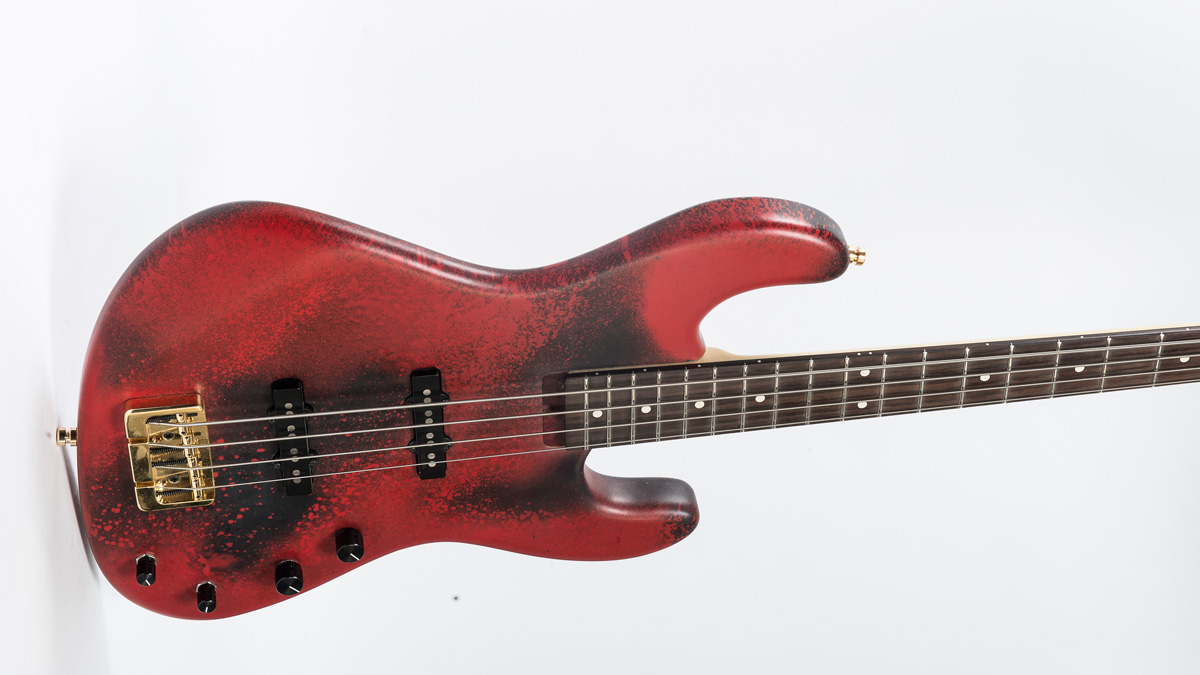MusicRadar Verdict
Fast, fun and considerably cheaper than a sports car!
Pros
- +
A bass that will push your playing to the limits.
Cons
- -
Three-band EQ lacks big mids.
MusicRadar's got your back
When the inhuman playing of bassist Dino Fiorenza gets translated into signature bass form, you know you’ve got something exciting on your hands.
Teaming up with fellow Italian luthiers and founders of Miguel Di Carlo Basses, Michele Di Carlantonio and Salvo Lupo, Fiorenza presented his signature model, the Blonde, to us at this year’s London Bass Guitar Show. This hot rod was built for speed and precision, so does it handle well on those tight corners - or will it drift off the tracks?
Build
With a five-bolt neck joint, C-shaped maple neck and rosewood fretboard, the Blonde offers a classic visual combination. As you would expect from a bass that is designed for swift, responsive playing, the Blonde is very light on its feet. Weighing in at around four kilos, the light limewood body allows enough stability and balance to pull off daring feats without impeding on your style.
Wearing its in influences on its sleeve, the red and faded black matte finish of the body, with matching headstock, could almost be a touching nod to the shred movement of the 80s. When old meets new like this,
it perfectly sums up the Blonde’s character.
Keeping things simple, the controls include bass, treble, balance and volume pots, which aren’t rocket surgery to figure out, allowing you to crack on with the important stuff. As electronics go, you’re in great hands, with two-single coil Ultra Jazz DiMarzio pickups.
Sounds
Plugged in, it’s obvious that the Blonde sure likes its treble. This bass has punch, and lots of it. Finger, pick, slap, tap, it makes no difference, every note is brought to life with vivid conviction.
Metal players in particular will get a kick out of this bass. Set to active, the top end will especially help those of the headbanging persuasion to cut through dense walls of riffs.
One slight downside: hunting down mids may prove to be a bit of a challenge when you look at the control options. Achieving this with the instrument alone is tricky, but not impossible; just a bit of a faff. This is where the Blonde does show its limitations, but with the right rig or a decent EQ pedal, this can be addressed.
Plugged in, it’s obvious that the Blonde sure likes its treble
The odds are, however, that if you’ve gone out of your way to fork over your hard-earned cash for this bass, taking a warm and woolly approach isn’t really what you had in mind.
As for playability, the Blonde’s accessibility really helps to define this instrument. Your hands can roam freely with ease, as the upper register is open for business. As maple necks go, this is an excellent one: without a single dead spot on the instrument, the consistency is uncanny.
Giving the player full access to the higher register, the bottom side of the neck closest to the body is deliberately chamfered, utilising a carefully shaped cutaway which encourages you to reach the dusty end of the fretboard. The action is reasonably low, set up for a comfortable play, with the strings spaced in the Goldilocks zone that is not too close, and not too far - but just right for finger accuracy.
This bass knows its audience and is a genuine contender in its field: Di Carlo has done an outstanding job - as long as you’re prepared to go large with the tone options. Much like a sports car, you need to plan on gunning it everywhere you go. This Italian stallion is raring to go and will take some taming, but the rewards are plentiful.
“Sometimes I am two people. Johnny is the nice one. Cash causes all the trouble. They fight”: How Johnny Cash drew on his own experiences to make his greatest songs
“For those on the hunt for a great quality 12-string electro-acoustic that won’t break the bank, it's a no-brainer”: Martin X Series Remastered D-X2E Brazilian 12-String review
“I have that on more records than anything else”: Take a peek inside Vaughn Oliver’s studio










